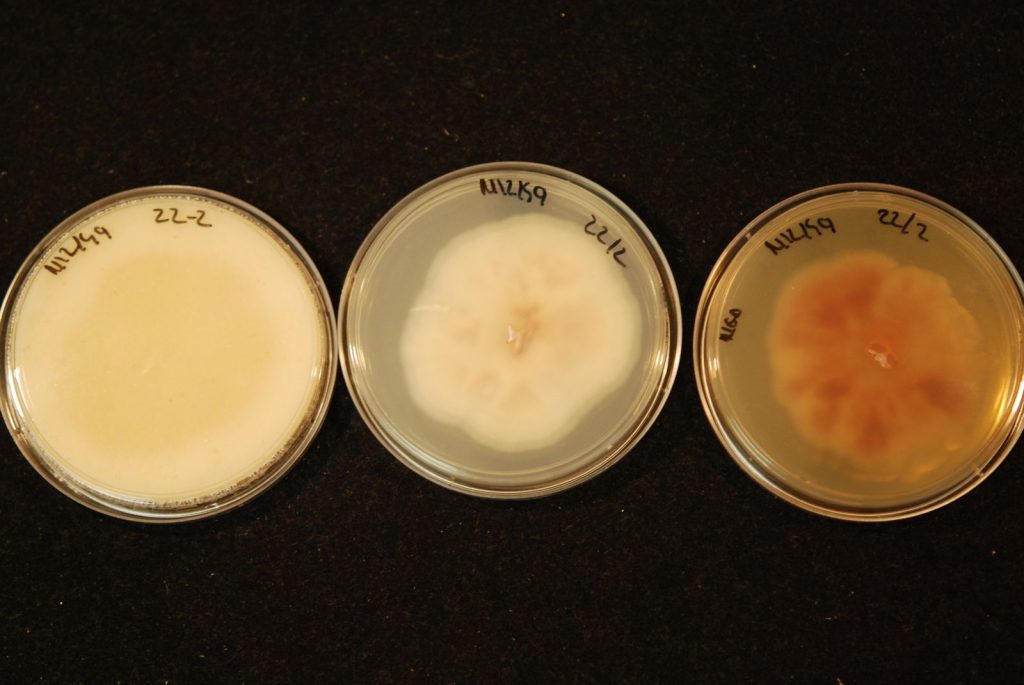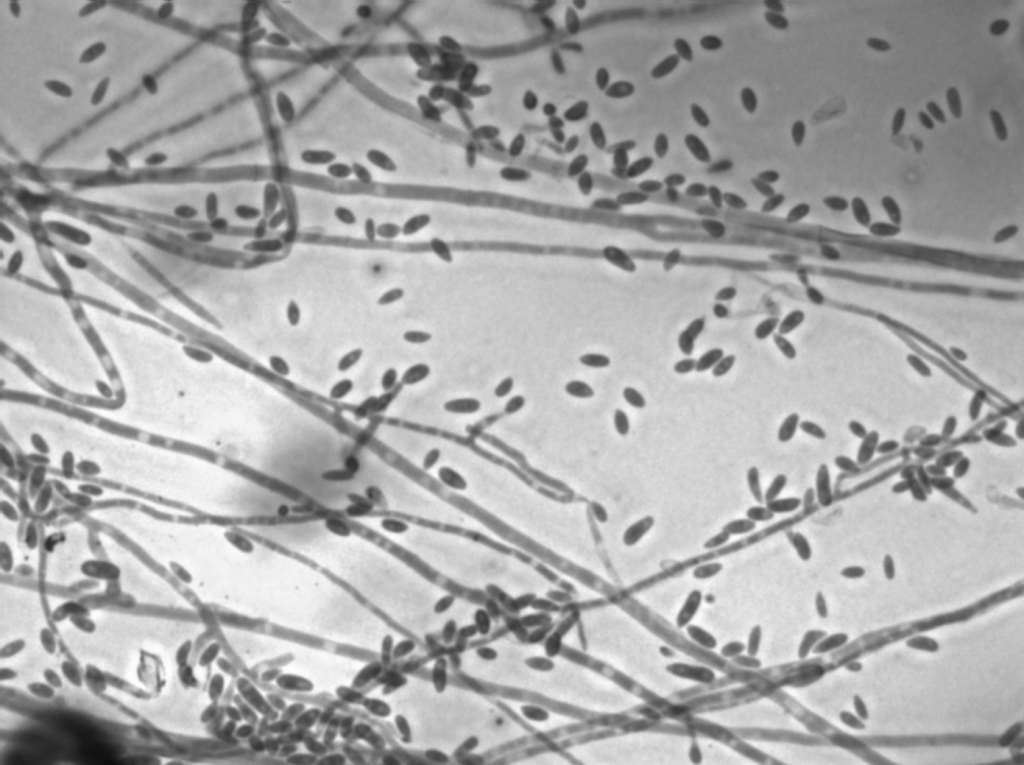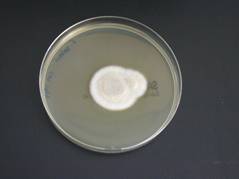Fusarium spp. are filamentous fungi that cause disease, commonly in plants and more rarely in humans (particularly in neutropenic patients). This can lead to a range of superficial and deep infections, including infections of the eyes. Fusarium spp. can also contaminate crops and animal feed with trichothecene and fumonisin mycotoxins (Alshannaq & Yu, 2017).

Factsheets
Fusarium oxysporum
| NAMES Fusarium oxysporum Reviewed by Tupaki-Sreepurna and Kindo, 2018. |
| NATURAL HABITAT A common soil fungus and pathogen of plants. |
| GEOGRAPHY Worldwide |
| PREVALENCE Unknown. There are no good epidemiology studies documenting the frequency of this pathogen. It is an infrequent cause of fungal infections, apart from keratitis. It is second only to Fusarium solani in causing human infections. |
| DISEASES – Keratitis; most frequent entity. Outbreaks have been associated with the use of contact lenses – Endophthalmitis – Onychomycosis – Cutaneous and subcutaneous infections – Arthritis and mycetoma – Sinusitis – Disseminated infections are mainly found in immunosuppressed patients, mainly haematological, and have a mortality rate close to 100% |
| CULTURE Colonies grow rapidly. The mycelium is white, then usually becomes purple. Sometimes some orange areas develop. Phialides are short in comparison with Fusarium solani. Microconidia are abundant and characteristic (bean shape), never in chains. Macroconidia are fusiform and slightly curved. Chlamydospores are terminal or intercalary. Biosafety level 2 |
| ANTIFUNGAL RESISTANCE Fusarium oxysporum is a highly resistant fungus. The most active antifungal is amphotericin B. Voriconazole does show activity against some isolates, but this is not always the case. Other azole and echinocandin antifungals are also inactive. |
| INDUSTRIAL USES Fusarium oxysporum produces several mycotoxins and enzymes for industrial use. The related species Fusarium graminearum is used to produce the food mycoprotein Quorn. |

Fusarium oxysporum 
Microscopic appearance of F. oxysporum

Fusarium solani
| NAMES Fusarium solani [teleomorph: Nectria haematococca ] Reviewed by Tupaki-Sreepurna and Kindo, 2018. |
| NATURAL HABITAT Frequently isolated from soil and plant debris. |
| GEOGRAPHY Worldwide |
| PREVALENCE The real frequency is unknown. Apart from keratitis, it is an infrequent cause of fungal infections, but it remains the most frequent species of Fusarium causing human infections. |
| DISEASES – Keratitis; most frequent entity. Outbreaks have been associated with the use of contact lenses – Endophthalmitis – Onychomycosis – Cutaneous and subcutaneous infections – Arthritis and mycetoma – Sinusitis – Disseminated infections are mainly in immunosuppressed patients, mainly haematological, and have a mortality close to 100% |
| CULTURE Colonies grow rapidly. The mycelium is white to cream. Sometimes areas of green or blueish-brown are developed. Conidiophores are long in comparison with other human pathogenic species. Microconidia are abundant and bean shaped. Strains isolated from humans do not usually produce macroconidia. Chlamydospores are frequent. Biosafety level 2 |
| ANTIFUNGAL RESISTANCE F. solani is a highly resistant fungus. The most active antifungal is amphotericin B. Voriconazole does show activity against some isolates, but this is not always the case. The rest of the azole antifungals are inactive, as well as the echinocandins. |
| INDUSTRIAL USES Produces ciclosporin A, an immunosuppressive agent, which transformed the outcome of organ transplantation. The related species Fusarium graminearum is used to produce the food mycoprotein Quorn. |

Microscopic appearance of F. solani 
Colonies of F. solani 
Colonies of F. solani
